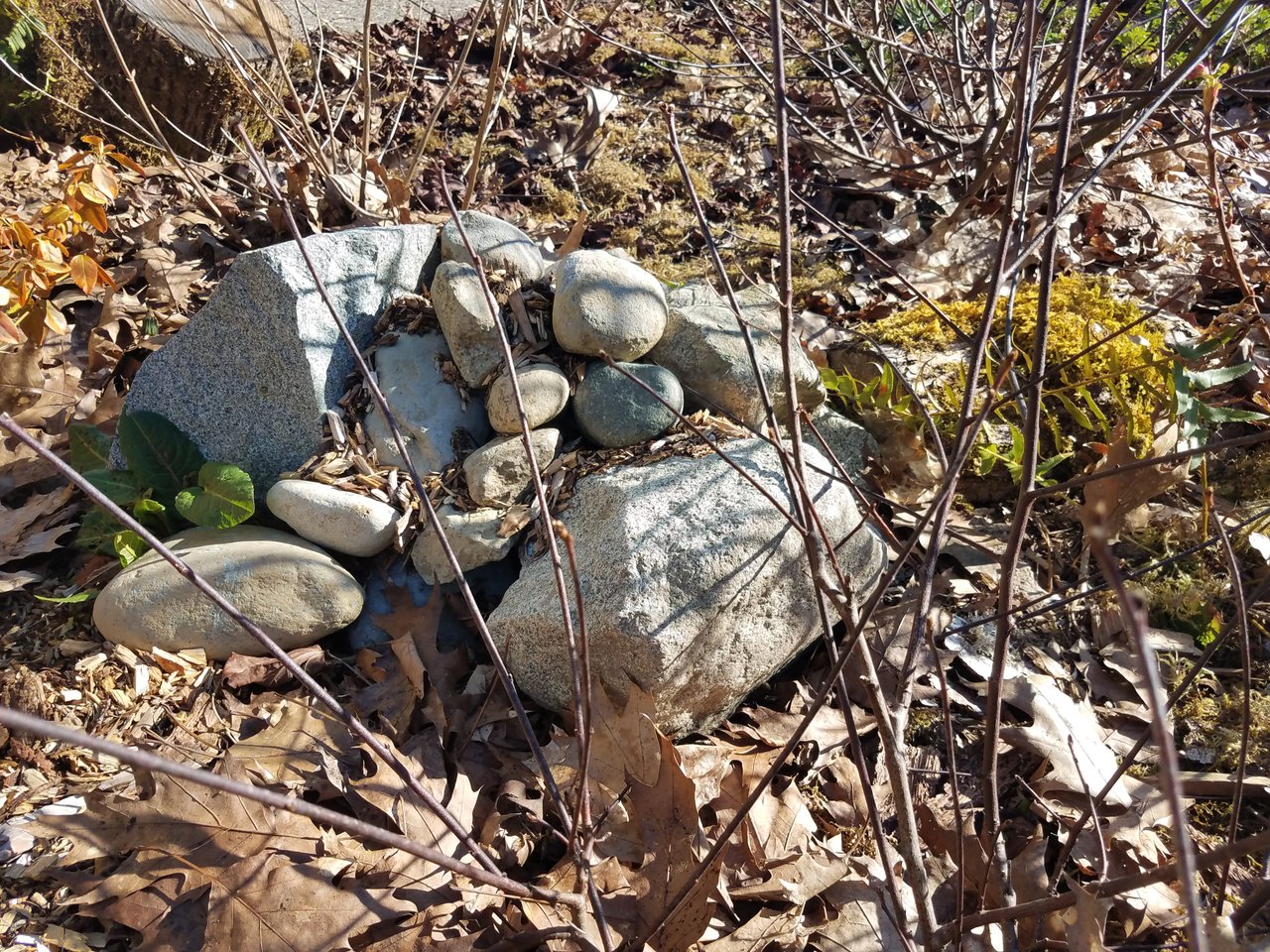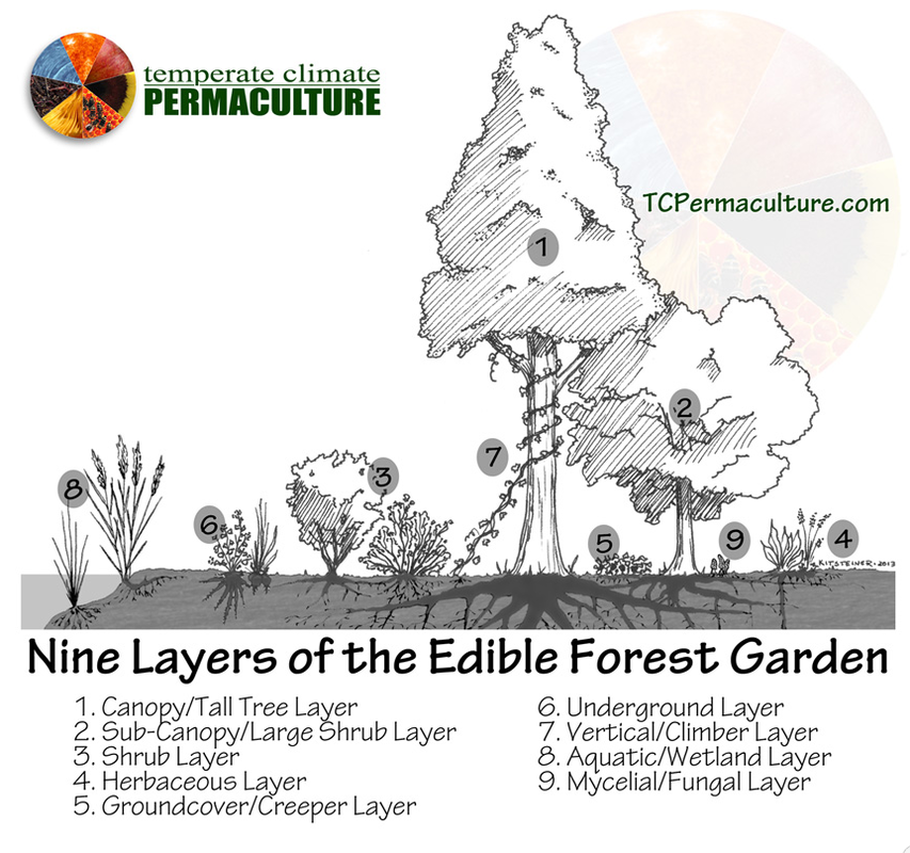Are there more than 7 layers in a food forest? I think so and I'm going to share with you all why. But I also want your feedback. Is this a crazy idea? Or does it make sense? Is it interesting? I may write a full blog post all about this concept but I want to see what you all think first.
Before I outline the new layers I think should be added to the food forest model here is a brief overview of what a food forest is and the traditional 7 layers. National Geographic has a great quick video all about food forests that I highly recommend as a good intro to the topic.
In brief a food forest is a system that mimics the natural structure of a forest to grow an abundance of food, wood, medicine, etc. for human consumption. A food forest (aka forest garden) is the ultimate expression of working with nature to generate a useful harvest for your homestead.
The traditional layers are:
1. A canopy layer with large fruit or nut trees (support trees and timber trees could be here too)
2. A sub-canopy layer of smaller trees such as dwarf fruit trees (coppiced trees could be here)
3. A shrub layer for fruiting bushes but again support plants such as nitrogen fixing shrubs work too
4. The herbaceous layer for herbs (cooking and medicinal), flowers, vegetables, etc.
5. Ground cover as a living mulch which can be edible.
6. The root crops
7. And a layer consisting of vines and climbers
Each of these layers would blend together in a natural forest and a forest garden tries to mimic that. Though sometimes you may choose to keep it as an open woodland with greater spacing between the large trees so more sun reaches the ground for the lower layers.
Instead of calling these the traditional layers how about we call them the living layers--sound good?
My Proposed Addition to this Model

This is all building off of what I was talking about in this
week's blog post about rewilding your homestead. In that post I talk about adding features such as snags (dead standing trees) to your homestead. I do this on mine by taking old logs and "planting" them upright.
For my day job I run large restoration projects across 4 counties in the South Puget Sound in WA. I have also done habitat assessments in Idaho and Washington for past jobs. Plus I grew up running through forests around the small rural Eastern WA town I grew up in. All of this has taught me that a forest is not just made up of the living elements such as plants and wildlife. The non-living elements such as rocks, woody debris, snags, etc. are a core part of a healthy vibrant forest.
So what does that mean for a food forest? Well these non-living elements tend to be ignored overall (though people are generally good about mulching). To help change that I propose these layers be added to the food forest model:
1. Large snags (10+ feet high and 1+ feet across)
2. Small snags (Less than 10 feet high)
3. The stump layer (Short and thick woody debris that mimic a stump)
4. Large woody debris (logs, root wads, etc. laying on the ground)
5. Rocks (both rock piles and individual large rocks)
6. Small woody debris (twigs, branches, etc.)
7. Mulch layer (leaves, wood chips, etc.)
The large snags might not always be safe in a food forest that sees a lot of traffic and they would be difficult to install. But if you have a large tree die then this could be an opportunity to cut it down to a safe but still tall height and remove the limbs. If large enough these snags are great habitat for woodpeckers, owls, and other birds plus other wildlife.
Small snags are easier and can be installed just like a fence post. I have added several of these to my homestead.

This is an example of a relatively small "stump" added to my in-progress food forest. The picture at the start of this section shows a small rock pile and here is an example of a larger one at one of my restoration sites.

Amphibians and reptiles love to hide in these rock piles. They can also capture a small amount of water and create a moist area below them that plant roots can tap into.
If you look at a forest floor there is a layer made up of logs, branches, leaves, etc. This layer to me is what truly defines something as a forest. The result is a fungal dominated system that is great for trees and shrubs. It is filled with life and also works as a sponge soaking up water and keeping the forest hydrated through dry spells. It also creates rich soil as it breaks down.

Here you can see one of my new planting areas in my in-progress food forest. I added a large log plus wood chips and fall leaves. All of this is to mimic a natural forest floor. I could add some branches and of course I need to add a lot more plants.
Each element in these layers would only provide a small benefit. But just like the original living layers of a food forest it is the interaction of them all together that adds complexity and diversity to the system. This is what can truly create a vibrant and abundant system.
Putting it all together

In this expanded model of a food forest there would be 7 living layers and 7 non-living layers. My view is that a forest is only truly a forest if it has at least a portion of these 7 non-living layers. From fungal systems to woodpeckers so much of the life of a forest depends on these non-living elements.
So what do you all think?
Please share your thoughts below I would love to hear from you all!

 13
13












 2
2








 1
1





 2
2




 1
1




 1
1
















